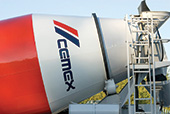Building Your Company’s Capabilities Through Global Expansion
To create and sustain a global competitive advantage, companies need a systematic approach to exploiting, renewing and enhancing their core capabilities.
Topics
Global competition is becoming tougher and more complicated than ever. Over the past 30 years, sharp declines in communication and transportation costs and the reduction of trade barriers have reshaped the global economy. Major new markets continue to open. Supply chains are becoming increasingly deverticalized and geographically dispersed. In many industries, new emerging-market competitors are now challenging established multinationals. Indeed, the global competitive landscape is becoming increasingly dynamic and complex, creating both new threats and new opportunities.
Today, global strategists need to go beyond such traditional questions as which are the most attractive markets for their company, and which markets are “closest” to them in terms of institutions, level of development and culture. They must sharpen their global strategies by focusing on how to exploit, enhance and renew or even transcend their home-based sources of advantage. The question is, how? What critical questions do global strategists need to answer before committing their companies’ resources to new markets?
Through our research and teaching, we have developed a framework to help strategists answer the two most crucial questions of any global strategy. (See “About the Research.”) Those two crucial questions are:
- Will a company’s current capabilities provide a competitive advantage in a target market?
- Will that new location give the company an opportunity to enhance its capabilities?
References
1. L. Vives, “Telefónica: Building a Global Company,” ESADE Business School case (Barcelona, Spain: ESADE Business School; 2009).
2. P. Ghemawat, D. Kiron and C. Knoop, “Amore Pacific: From Local to Global Beauty,” Harvard Business School case no. 706-411 (Boston: Harvard Business School Publishing, 2006).
3. M. Landler, “Wal-Mart Gives Up Germany,” International Herald Tribune, July 28, 2006.
4. K. Bradsher, “To Conquer Wind Power, China Writes the Rules,” New York Times, Dec. 14, 2010.
5. E. Westney, “Shimano Inc.,” (case study, MIT Sloan School of Management, Cambridge, Massachusetts, 2006).
6. L. Vives and D. Lessard, “The PC Wars: Dell vs. Lenovo” (case study, MIT Sloan School of Management, Cambridge, Massachusetts, 2006).
7. “Tata Motors and Hispano Carrocera SA Sign Investment Agreement,” press release, March 16, 2005, http://tatamotors.com.
8. C. Rodrigues, “On the Fast Track,” April 2006, www.tata.com.
9. J. Birchall,“WalMart Lines Up Sites for Smaller Stores,” Financial Times, Sept. 19, 2010.
10. D.R. Lessard and R. Lucea, “Mexican Multinationals: Insights from Cemex,” in “Emerging Multinationals from Emerging Markets,” ed. R. Ramamurti and J.V. Singh (Cambridge, U.K.: Cambridge University Press, 2009), 280-311; and D.R. Lessard and C. Reavis, “Globalization ‘The Cemex Way,’” MIT Sloan School case no. 09-039 (Cambridge, Massachusetts: MIT Sloan School of Management, 2009).
11. P. Ghemawat, “Managing Differences: The Central Challenge of Global Strategy,” Harvard Business Review 85, no. 3 (March 2007): 59-68.
12. J. Santos, Y. Doz and P. Williamson, “Is Your Innovation Process Global?” MIT Sloan Management Review 45, no. 4 (summer 2004): 31-37.


Comment (1)
Pdf University Expansion In A Changing Global Economy Pdf | Books Review